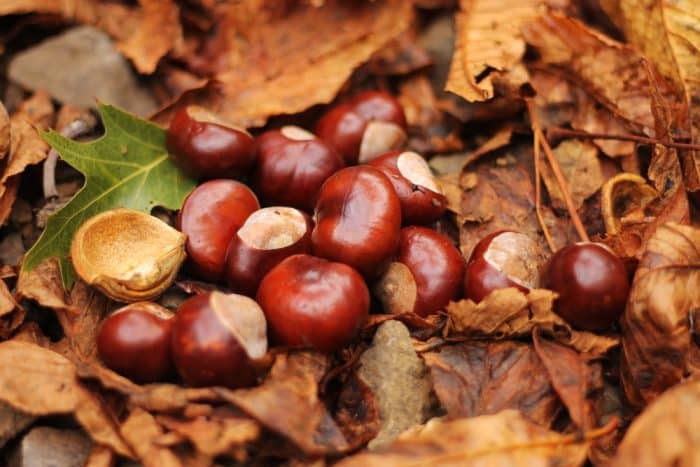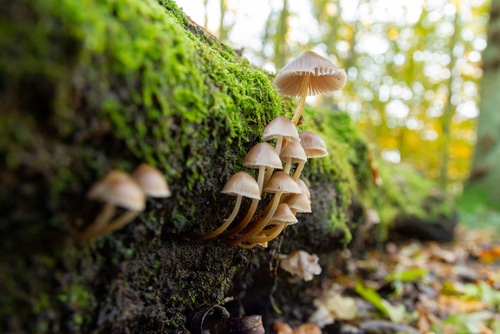ACORNS
You might also be asking, are acorns poisonous to dogs? The answer is yes. Acorns contain tannins, which can upset your dog’s stomach and, in larger amounts, cause more serious health issues such as liver or kidney damage. Signs of acorn poisoning can include your dog being sick, diarrhoea, abdominal pain, and in severe cases, lethargy or loss of appetite.
Like conkers, acorns are also a choking risk. Their size and hardness make them dangerous if swallowed, especially for smaller breeds. It’s advisable to keep them on the lead in areas where oak trees are common.
While conkers and acorns are part of the season’s natural scenery, they’re best admired from a distance to keep your dog safe.
FALLEN FRUITS AND BERRIES
Not all autumn berries are as innocent as they look. As the season unfolds and trees, bushes and hedgerows begin to shed their fruit, it can feel like a natural playground for curious dogs. Brightly coloured berries and fallen fruit often catch a dog’s eye (and nose), but many of these seasonal treats can hide some very real dangers.
Certain plants are particularly toxic. Deadly Nightshade, with its dark, glossy berries, can cause severe illness if ingested. Cuckoo Pint, also known as Lords-and-Ladies, produces red berries that are especially tempting to dogs but highly poisonous. Mistletoe, often associated with festive decorations later in the year, can also be toxic when encountered outdoors. All three are most commonly found in woodland or shaded areas, meaning even a relaxed countryside walk can present hidden hazards.
It isn’t just wild plants that are a concern. Fallen fruit from apple, pear, or plum trees can create problems once it begins to decay. As fruit ferments, it produces alcohol, and ingestion can lead to alcohol poisoning in dogs. Mouldy fruit can cause stomach upsets, vomiting, diarrhoea, or more serious health issues depending on the amount consumed. Even fruits that are safe when fresh can become risky once they start to rot.
The challenge for pet owners is that dogs explore the world with their mouths. A quick sniff and a bite can happen in seconds, especially when something looks unusual or smells sweet. That’s why vigilance on walks is so important during autumn. Where possible, keep your dog on a lead in areas where berries are plentiful, and clear fallen fruit promptly if you have trees in your garden.
PLANTS AND BULBS
Cultivated plants and bulbs such as amaryllis, hydrangea, crocus, daffodils and tulips can be harmful to dogs. If dug up and eaten, they may cause poisoning as well as choking or intestinal blockages.
WILD MUSHROOMS
While some wild fungi are edible, highly nutritious and even beneficial for the immune system [1], telling the difference between safe and poisonous varieties can be extremely difficult. If your dog eats an unidentified fungus, it could lead to illness ranging from mild stomach upset to serious health problems. If you see your dog ingesting a wild mushroom, collect a sample to help identify the species, or take it with you to your vet for advice.









0 comments